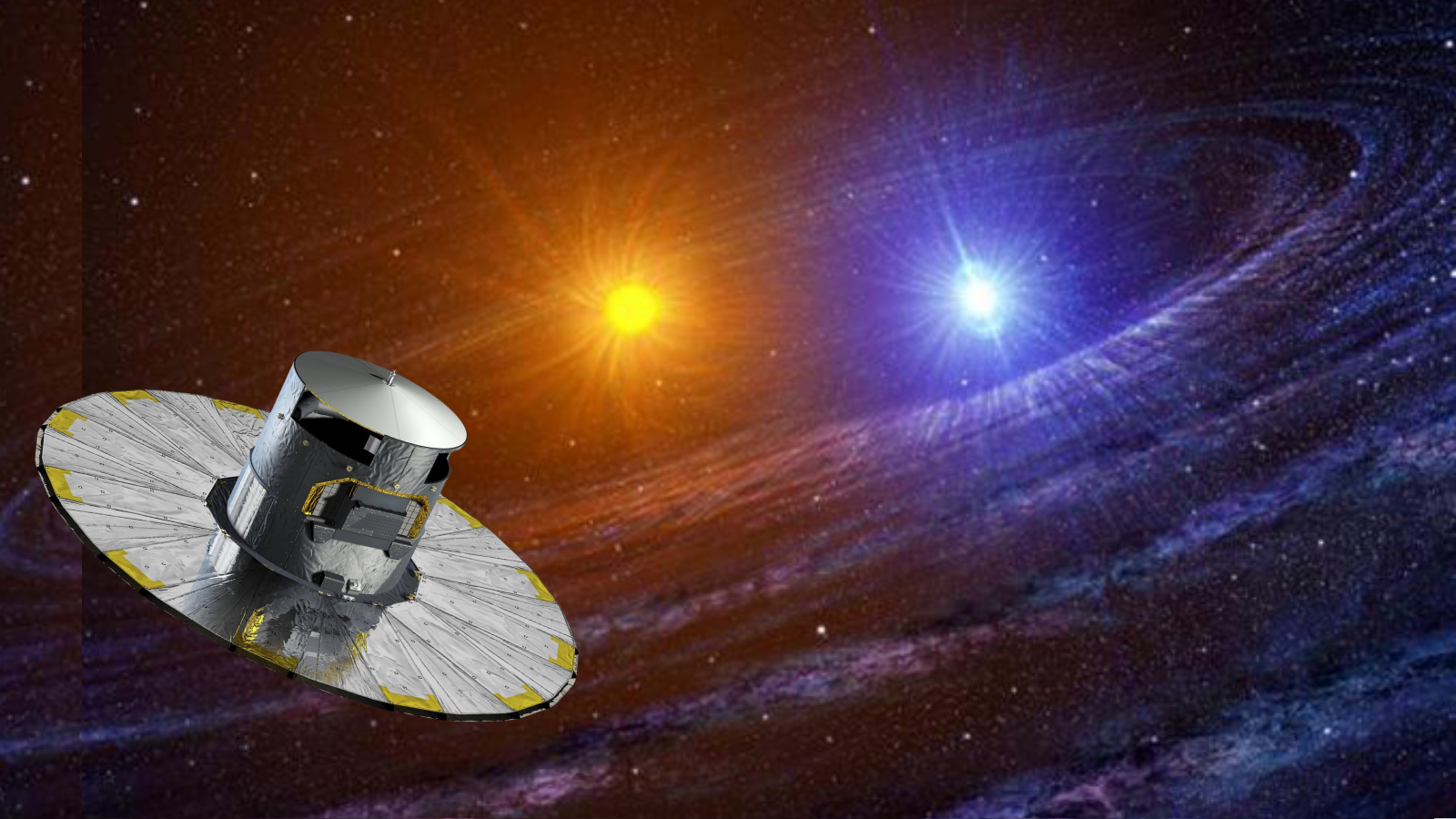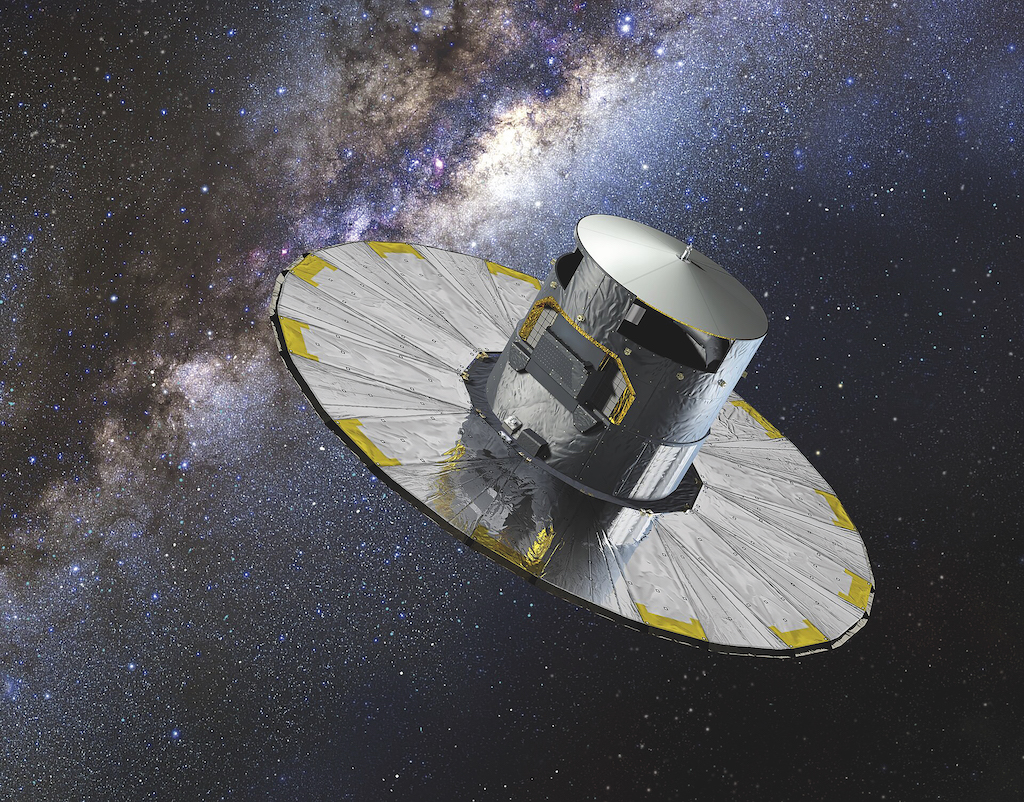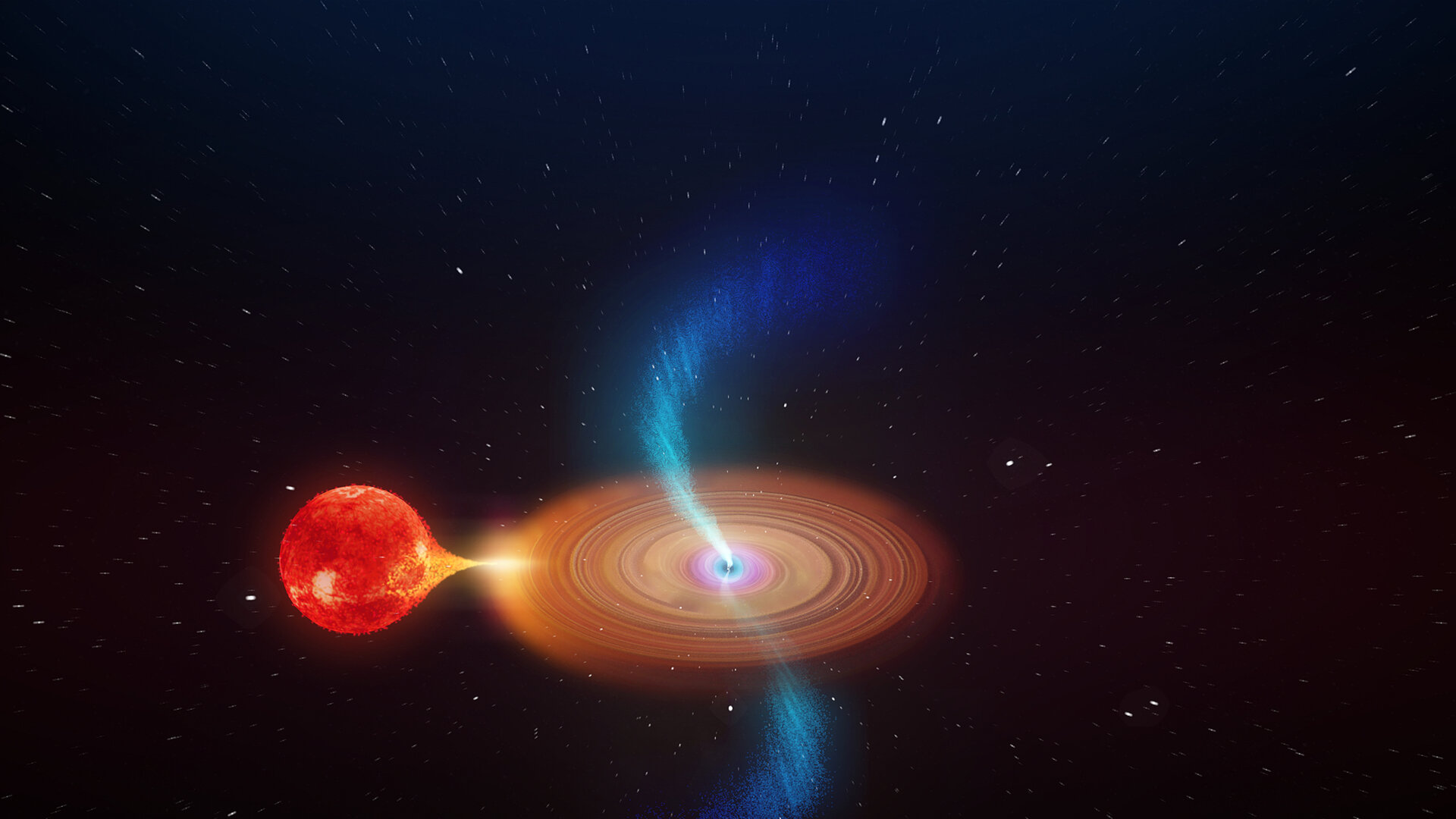Like the 90s, binary stars are back in style
For many years, binary star research was as neglected as an old Tamagotchi. Not anymore.

Some 90s trends have made very welcome comebacks; others, no one needs to see ever again. Unlike frosted tips, baggy Tie-Dye shirts, landline phones and pogs, however, which have (hopefully?) been consigned to the dustbin, binary stars are resurfacing as worthy of study. And not a moment too soon.
In short, binary stars are vital in the quest to understand stellar evolution. They can also enhance our comprehension of exotic astrophysical phenomena, like the supernova explosions that mark births of black holes and neutron stars. Yet, for many years, binary star research has been as neglected as that old Tamagotchi in your drawer.
Harvard and Smithsonian Center for Astrophysics (CfA) researcher Kareem El-Badry, thankfully, confirms that a binary star renaissance is now underway.
"I think a lot of astronomers viewed binaries as kind of a solved problem and less exciting than other areas of astrophysics, like galaxy formation, cosmology, or exoplanets," El-Badry told Space.com. "It's an old field, so after 200 years of study, it seemed around 15 years ago that most of the important questions had been answered. Now binary stars are coming back stronger than a 90s trend!"
Related: Record breakers! Super-close dwarf stars orbit each other in less than a day
He credits the binary star comeback to a decade of cosmic data gleaned with the European Space Agency's star-mapping space telescope, Gaia.
Gaia launched in 2013 on a mission to create detaield measurements of a billion stars throughout the Milky Way galaxy and beyond. By mapping the motions, luminosities, temperatures and compositions of these stars, Gaia aims to create the most precise three-dimensional model of our cosmic backyard ever.
Breaking space news, the latest updates on rocket launches, skywatching events and more!
The latest data drop from Gaia occurred on Oct. 10, 2023, and contained data on 1.8 billion stars. This was, incredibly, just a taste of what is to come with the fourth major data drop from the space telescope, dubbed Gaia Data Release 4 (DR4). Gaia owes its power to a technique called "astrometry," which is almost tailored to the investigation of stars with companions.
"Astrometry measures distances to stars and detects their 'wobble' on the sky due to binary companions," El-Badry said. "The sheer volume of the Gaia dataset means that it includes lots of never-before-seen things: Gaia has already given us orbital solutions for around 50 times more binaries than all previous missions."
When two become one
Despite our familiarity with (and understandable bias toward) single-star systems, thanks to the fact that we orbit such a lonely stellar body, binaries are more common in the Milky Way than one may imagine. Around 50% of stars around the size of the sun exist with a binary partner, and this proportion increases to around 75% for more massive stars.
"More than half of all stars are binaries!" El-Badry said. "So, if you want to understand the evolution of 'typical' stars, you need to account for the presence of their companions."
These binary systems offer scientists the opportunity to study phenomena that aren't seen around single stars, like the sun. This includes what happens during mass transfers from a star to its binary partner, events that lead to one star being kicked from a binary system. The systems can also help us understand what happens when stars spiral together and merge into one.
Gaia data in general can also reveal the kinds of distances at which binary stars orbit each other, even when these distances are very wide, providing a better picture over a wider range of binary separations than other missions.
"Binaries give us a chance to directly measure stellar masses via the star's gravitational effects on each other, which we otherwise cannot do," El-Badry explained. "This has shown there is an excess population of binaries in which the two stars have almost exactly the same mass, even when separated by hundreds to thousands of times the distance between the Earth and the sun."
Gaia hasn't just been influential in the amount of stellar binaries it has physically revealed, however. The ESA spacecraft has also given us better estimations of the distances of binary stars as a whole, something which El-Badry said was previously a "major roadblock" in astrophysics.
Gaia data can also tell us something about binary systems in which a star is orbited by something more exotic, like a white dwarf, a neutron star, or a black hole. These systems emit gravitational waves as their constituents spiral around each other.
"Binaries also let us detect dark objects like black holes, which we otherwise couldn't see, via their gravitational effects on luminous companions," El-Badry said, adding this could help astronomers better understand how commonly normal stars have a black hole companion and how these extremely exotic systems could form.
This renaissance in binary star studies comes at the right time, coinciding with the reignited interest of understanding how these systems formed — one sparked by recent detections of gravitational waves from merging black holes and neutron star binaries.
The future looks bright for binary stars, and El-Badry is actually hopeful a few 90s trends may one-day make a similar resurgence.
"I hope flip phones, not having to write a lot of emails, and the Spice Girls all make a comeback," the CfA reseacher remarked. "I'm less keen to see low-rise jeans and equating curly hair with 'being ugly' in every teen movie make a return."
El-Badry's review of ten years of Gaia binary star data is published on the paper repository site arXiv.

Robert Lea is a science journalist in the U.K. whose articles have been published in Physics World, New Scientist, Astronomy Magazine, All About Space, Newsweek and ZME Science. He also writes about science communication for Elsevier and the European Journal of Physics. Rob holds a bachelor of science degree in physics and astronomy from the U.K.’s Open University. Follow him on Twitter @sciencef1rst.


